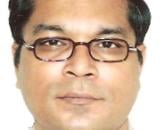
The success rates of all treatmemt for female infertility decline with advanced age
In women aged <35 years the success rate of IVF is quite good (27.60% per cycle of treatment). This means about 4 IVF treatment would be required to achieve a pregnancy. The rate falls to 20.3% per cycle for women aged 35-39 years (about 5 IVF treatment would be required to achieve a pregnancy) and to a low level of 10% per cycle for women aged 40-42 years (about 10 IVF treatment would be required to achieve a pregnancy). The rate would be around 5% after 42 years of age (about 20 IVF treatment would be required to achieve a pregnancy.
With advanced female age and consequent reduction in the success rates of IVF, proportionately greater number of IVF treatment would be required to achieve a pregnancy with proportionately higher costs
The cost of one IVF treatment would be approximately Rs 80000 in India (₤3000-₤3500 in the UK). Therefore, an early consultation with an Infertility Specialist, when the female partner’s age is around 30 years or less, might save the infertile couples a lot of money and also significantly improve their chances of having a baby.
The success rate of IVF reduces at the rate of about 26.45% when the age of the woman receiving IVF treatment is between 35-39 years compared to when that is <35 years. The success rate of IVF reduces at a higher rate of about 50.74% when the age of the woman receiving IVF treatment is between 40-42 years compared to when that is between 35-39 years. The rate of reduction for the female age group of 40-42 years is much higher (63.77%) when compared with that of women <35 years.
Delaying treatment for few years beyond 35 years of age almost halves the chance of IVF success
In practice, it is unfortunate that the majority of infertile couples delay consulting an Infertility Specialist because of variety of reasons such as lack of awareness regarding infertility and its treatment, and that female fertility declines with advanced age; denial that they might have some problems, reluctance, fear of repercussions amongst the family, friends and in the society; religious beliefs, sometimes due to inappropriate advice and false reassurance received from variety of people including some health professionals etc.
It would be wise, useful and cost-effective to consult an Infertility Specialist at the appropriate time to have a proper assessment of the couple’s condition
In women aged <35 years the success rate of donor insemination (DI) is reasonably good (13.6% per cycle of treatment). This means about 7 DI treatment would be required to achieve a pregnancy. The rate falls to 9.2% per cycle for women aged 35-39 years (about 11 DI treatment would be required to achieve a pregnancy) and to a low level of 4.5% per cycle for women aged 40-42 years (about 22 DI treatment would be required to achieve a pregnancy).
The success rate of DI reduces at the rate of about 32.35% when the age of the woman receiving DI is between 35-39 years compared to when that is <35 years. The success rate of DI reduces at a higher rate of about 51.09% when the age of the woman receiving DI is between 40-42 years compared to when that is between 35-39 years. The rate of reduction for the female age group of 40-42 years is much higher (66.91%) when compared with that of women <35 years.
Therefore it would be prudent to commence investigations and treatment of women with infertility close to 30 years or earlier, if possible, rather than 35 years and beyond as the natural conception rates and success rates of any treatment including ovulation induction, tubal surgery, IUI/DI, IVF would be substantially lower as they approach 35 years and beyond. If they are seen by an Infertility Specialist around 30 years, investigated and/or receive initial treatment for another year or so, majority of them could still have IVF etc, if required, before they cross 35 years when the success rates of those treatment would still be very good. As the success rates of treatment would be greater compared with women around 40 years, it would be relatively cheaper (higher success rate per cycle of treatment means less expenditure per live baby born).
To achieve this objective it is important to try to increase the awareness in the general population (particularly young generation) regarding the problem of infertility and its direct correlation with advanced female age
In women aged <35 years the success rate of donor insemination (DI) is reasonably good (13.6% per cycle of treatment). This means about 7 DI treatment would be required to achieve a pregnancy. The rate falls to 9.2% per cycle for women aged 35-39 years (about 11 DI treatment would be required to achieve a pregnancy) and to a low level of 4.5% per cycle for women aged 40-42 years (about 22 DI treatment would be required to achieve a pregnancy).
The success rate of DI reduces at the rate of about 32.35% when the age of the woman receiving DI is between 35-39 years compared to when that is <35 years. The success rate of DI reduces at a higher rate of about 51.09% when the age of the woman receiving DI is between 40-42 years compared to when that is between 35-39 years. The rate of reduction for the female age group of 40-42 years is much higher (66.91%) when compared with that of women <35 years.
Further information: For better insight you could check the Figures and Tables (that could not be included in the blog) in the book "Infertility - A Growing Problem The Facts and Solutions" by Dr Sudipta Paul, Dey Publications, Kolkata.

Comments should be on the topic and should not be abusive. The editorial team reserves the right to review and moderate the comments posted on the site.